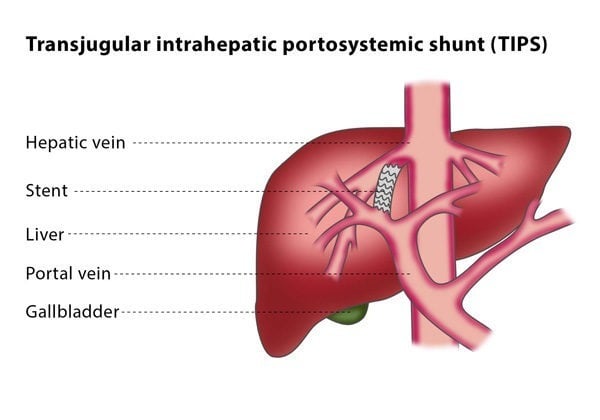What is TIPS?
A shunt is an artificial passage which allows fluid to move from one part of your body to another. A transjugular intrahepatic portosystemic shunt (TIPS) connects the vein which brings blood from your gastrointestinal tract and intra-abdominal organs to your liver, and the vein from your liver to the right part of your heart.
How does the procedure work?
You will be conscious but sedated for the procedure, which the interventional radiologist will carry out using fluoroscopy and ultrasound for guidance.
The interventional radiologist will puncture your jugular vein on the right side of your neck with a needle and will then insert a vascular sheath over a wire into the inferior vena cava. They will explore the hepatic vein with a catheter designed for this purpose.
The interventional radiologist will puncture the portal vein through the liver with a special needle and position a wire between the two veins. After the area has been dilated, a stent or stent graft will be placed between the portal and hepatic vein to create a lasting connection.

